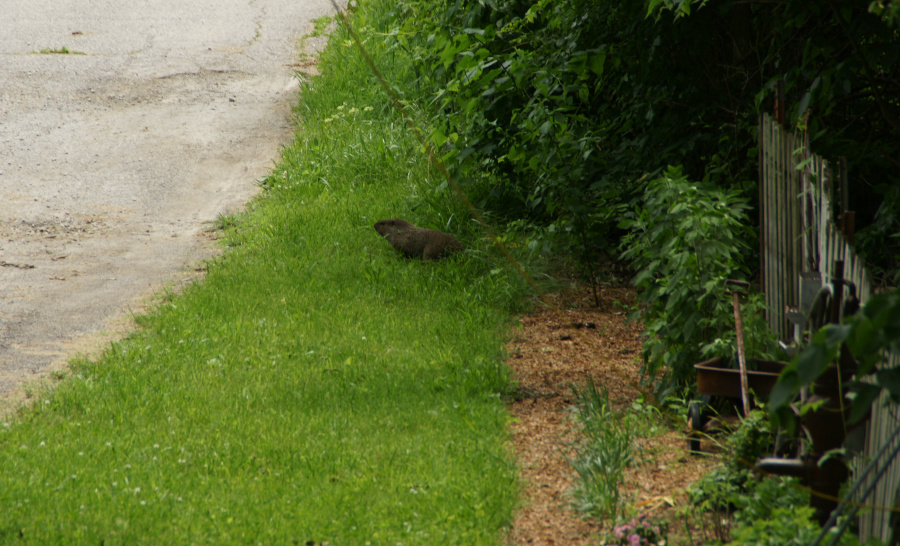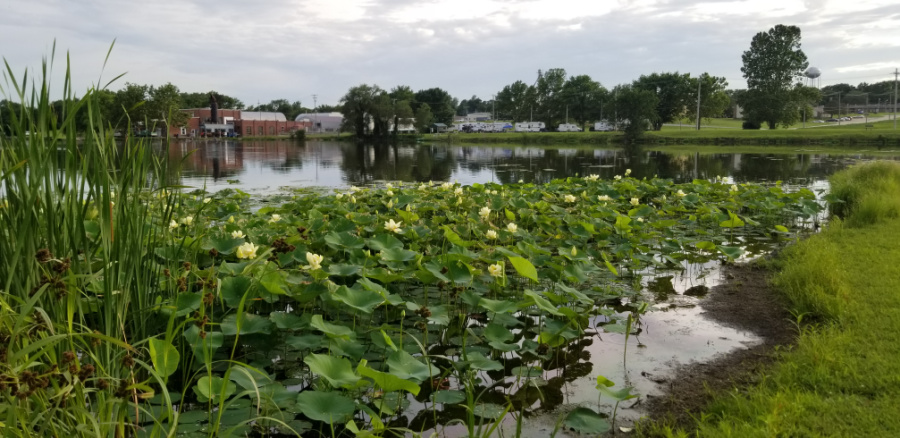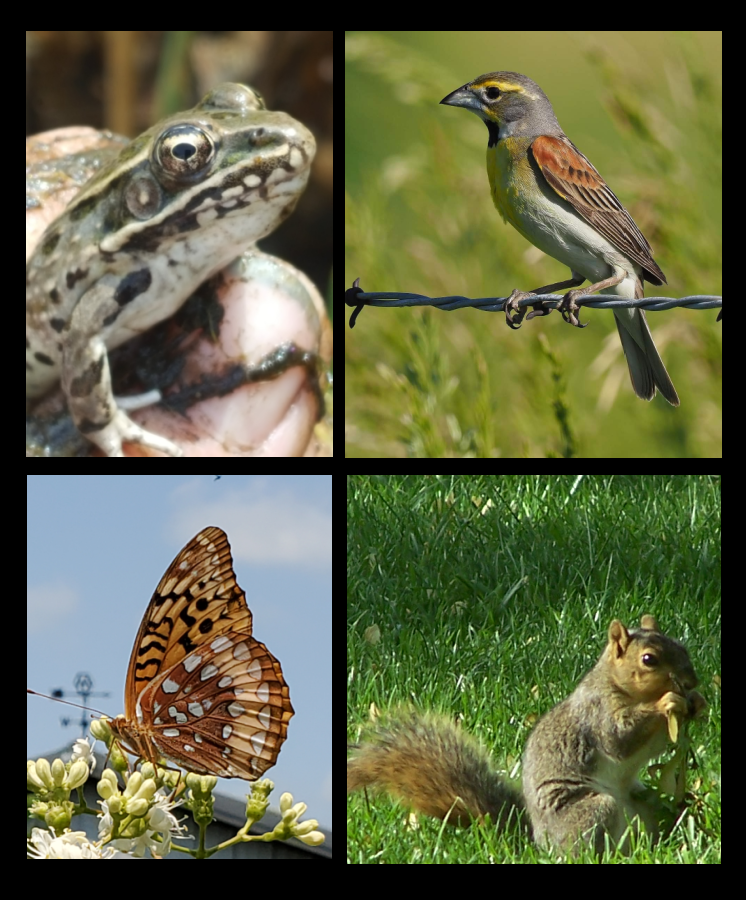If you live in an urban setting, then attracting wildlife may not be the thing for you. But what does wildlife mean? To me, attracting wildlife mean providing homes for birds, mammals, amphibians, reptiles, arthropods, and other creatures to the garden. For some of you, it may only mean birds. For others, it might be birds, butterflies, and bees. All of these and more can come to the right setting, and even the wrong one.
In landscapes across America, wildlife comes in uninvited, feeding on our plants, knocking into trash cans, and scaring or eating the family pets. Large predators such as bear, bobcat, lion, badger, and coyote are unwanted wildlife. However, attracting things like deer, rabbits, otters, and other mammals might result in the presence of predators. So be careful what kind of nature you want.
One way to avoid most of the predators and large animals, is to go for the smaller ones. And then, be prepared for the random visit from the others. A once in awhile visit from deer is okay, as long as their are no mountain lions following. The same goes true for rabbits, whose chief predator is the coyote.
But how do we get wildlife to our gardens? By diversifying our landscapes. But what does that mean? It means that you plant a wider variety of trees, shrubs, perennials, and grasses. Also, you need to have things animals need like shelter, water, and food. Plants are or provide the food.
What is the Purpose of Your Garden?
What is the why behind attracting wildlife to your garden? Are you a bird spotter looking for more species diversity? Do want large animals like deer or antelope to find a place to graze by your home? Are your kids wanting a wild place to play and enjoy a “safari” atmosphere? Or do you simply want to be in tune with nature all around you?
Finding your why before you choose how and what to do is so important. It should always be the first step in any venture. It will help you to determine not only your goals, but your planning processes, your strengths and weaknesses, and who will help you get the work done.

Choosing What Wildlife to Attract
What animals do you want to see in your yard? Do you want to see a deer by your patio munching your hostas? Or would you like to feed racoons by the edge of your koi pond? What you want to see and how you plan to attract it will determine whether you see the other things too. Here is a list of some of the wildlife you may want to see in your yard.
- Birds (primarily songbirds, but also owls, woodpeckers, and waterfowl)
- Reptiles (lizards, turtles, and snakes)
- Amphibians (salamanders, frogs, toads, and newts)
- Mammals (rabbits, deer, skunks, bats, racoons, badgers, otters, muskrat, etc.)
- Insects (butterflies, moths, bees, etc.)
- Arachnids (spiders mainly)
- Other
Just remember that attracting one type of animal may bring in another type. This can be a good thing if you are going for both insects and birds. But you will still get reptiles and amphibians when trying to get insects. This is because animals eat each other.
What type of animal you choose to attract will also affect how you use the land you have. For example, if you currently live in an area of new construction, and want to attract birds, you will have to plant a lot of trees, shrubs, and perennials, as well as add in a water source like a pond or stream.

Using the Lay of the Land for Attracting Wildlife
What does that mean? It means that you may choose what wildlife you want based more on what type of setting you live in than your own personal preferences. If you already live in forested land, near a large river or stream, it does not make sense to rip out your trees and plan a prairie or desert garden. No, you plan to attract forest creatures such as deer, squirrels, skunks, birds, and others.
Here are some of the types of natural landscapes which should be copied or worked with to create a wildlife-friendly garden.
- Prairie – features open meadows or areas dominated with grasses, but including forbs or perennial flowers. Great for birds, deer, antelope, rabbits, snakes, lizards, insects.
- Savannah – includes large expanses of grass and forbs, with clusters of trees such as oaks. Here you will find birds, deer, coyotes, rabbits, badger, snakes, lizards, turtles, insects, and more.
- Forest – has long-standing or old-growth trees such as oak, maple, pine, spruce, beech. Very low light levels in summer and sparse undergrowth plants. Great for birds, lizards, snakes, insects (especially moths), spiders, salamanders, weasels, and more.
- Glades – broken meadows within a forest type setting, but with younger and more open trees and canopy cover. Great for finding birds, snakes, turtles, lizards, insects, spiders, deer, rabbits, and others.
- Marsh – has boggy or partially saturated meadows dominated by grasses, sedges, and rushes, with some wildflowers. Great for waterfowl, birds, turtles, snakes, salamanders, frogs, toads, drinking mammals, muskrat, beaver, mink, and other wetland species.
- Lake – has open stretches of water which has little to no active current except during rain. Here you can find waterfowl, frogs, snakes, turtles, beaver, otter, mink, marten, and others.
For many homeowners, you will likely have several of these types of habitats within the scope of your landscape. Some people may live in a residential area butting up to a lake, and may have lake, marsh, and savannah all squeezed together. Newer home construction sites are typically devoid of trees, and can easily be turned into prairie or savannah. Forest may be the hardest to create new, but is often easy for an older home, which has a lot of trees.

What do Animals Need in a Habitat?
It is very simple. They look for food, water, and cover (shelter). Most animals live in a territory, just like humans. Unlike us, they have no fences, walls, or house to define their territory. Many of the things animals need, you cannot provide, unless you allow them to eat each other on your property. While this may seem like a detrimental or scary thing, its a part of nature.
Water and cover however, are easier to provide. Water can be in the form a bird bath, small pond, large pond, stream, or waterfall. Cover can be achieved in a variety of ways such as brush piles, nesting boxes, stone or rock piles, or wooded areas. Each type of natural landscape can have its own kind of water and cover area. The plants you choose plus feeding stations will cover the food aspect, at least for the herbivores and birds. As those animals increase, the larger predators will move in.
Creating an Ecosystem for Wildlife
If you are looking to attract either insects or birds, I have several other blogs on doing just that. But if you are looking to have a variety of animals visiting your gardens or landscape on a daily basis, then you need to create an ecosystem, with several functions running together. To start, you need to figure which kind of natural landscape you live in, and use it as the basis for your creation.
For places which already have large bodies of water nearby, either ponds, lakes, or rivers/streams, you do not need to add additional water sources. I do not have a pond or stream in my landscape (except the duck pond) because there is a farm pond less 1000 feet away though not on my property, and our town lake less than 1/4 mile away, with a large stream. Birds, mammals, and other wildlife use these sources primarily.

Some Things That You Can Do in Your Landscape
There are many things that you can look into or do to your landscape in order to transform it into a wildlife ecosystem. Once water is identified, or added in if necessary, then the next thing is adding cover and food sources. Doing some or all of the following things will help wildlife come into your garden.
- Let it be wild – by allowing plants to grow together with less planning, you not only let them decided where they want to thrive, you also allow for more cover spots for rabbits, birds, snakes, and others.
- Leave brush piles, snags, and downed trees – all of these are beneficial to a healthy ecosystem. They not only provide cover for wildlife, they play an important role in the development of fungi, insects, and bacteria.
- Use natives – native species already have a relationship with the animals around you, so why not encourage it?
- Avoid invasive plants – while there are some nonnative which can be incorporated into the landscape, invasives should be avoided because they can take over and eliminate native species. And they have no native predators. Check out your local extension and regional state offices for a list of invasives in your area.
- Diversify – be sure to mix in as many species as possible, allowing each have its own space. The more plant material species you have, the greater potential for wildlife you will encourage.
- Protect your habitats – if you have dog or cat pets, make sure they are kept from the garden, or put bells on them to warn approaching wildlife or their presence. Also, keeping fences or screening up can protect your garden visitors from neighbors or unwatched children.
- Use boulders or stones. Every landscape should have a sunny boulder or rock pile where lizards and snakes can regulate their body’s temperature.
Conclusion
Attracting wildlife to the garden is more than just a landscape process, it is often a lifestyle change. You will find yourself spending more time watching the birds, insects, and other animals as they visit the different parts. Spending time in nature can be difficult, but if you have it in your garden, you make it so much easier for yourself and your family or friends.
Happy planting!




